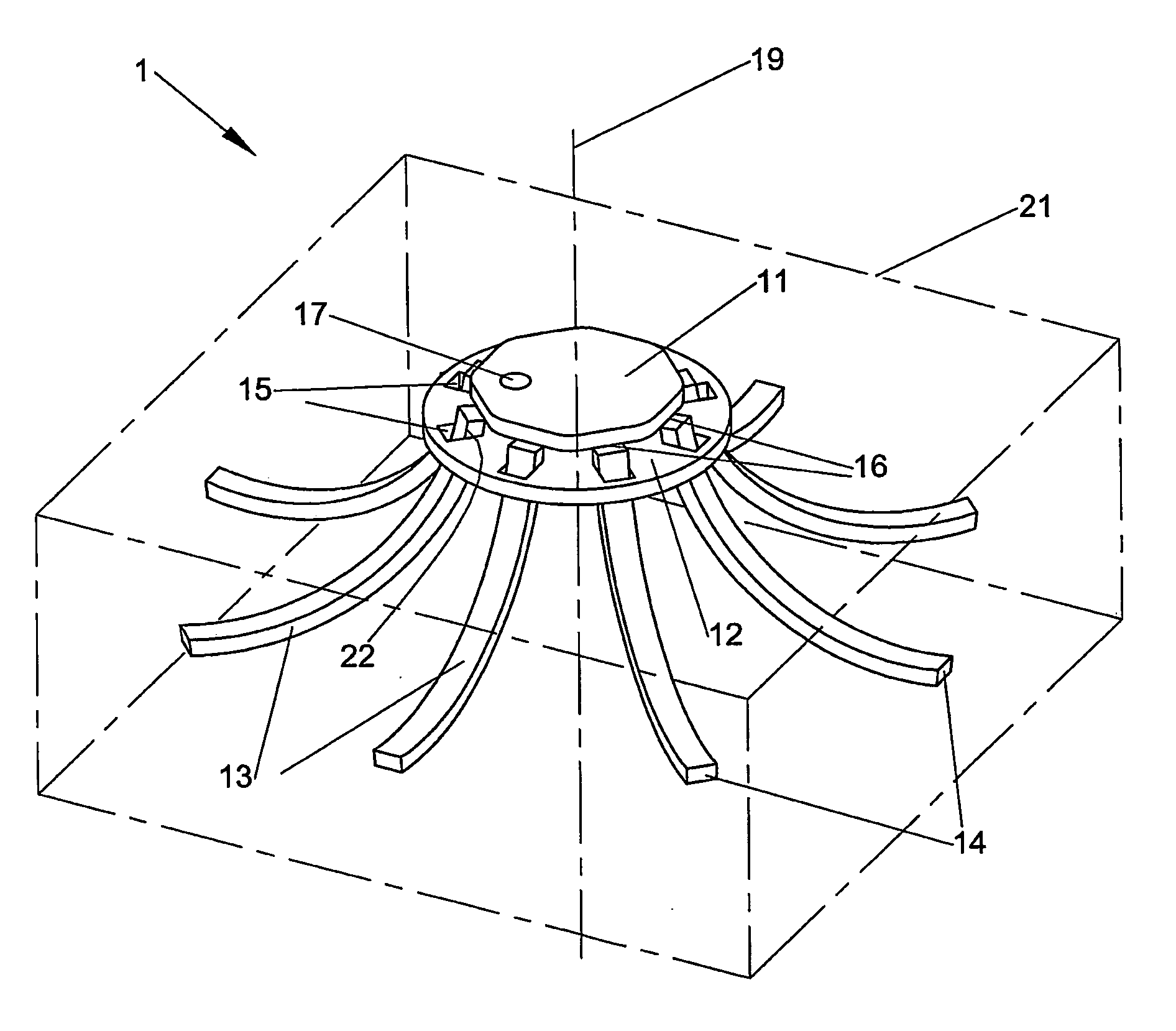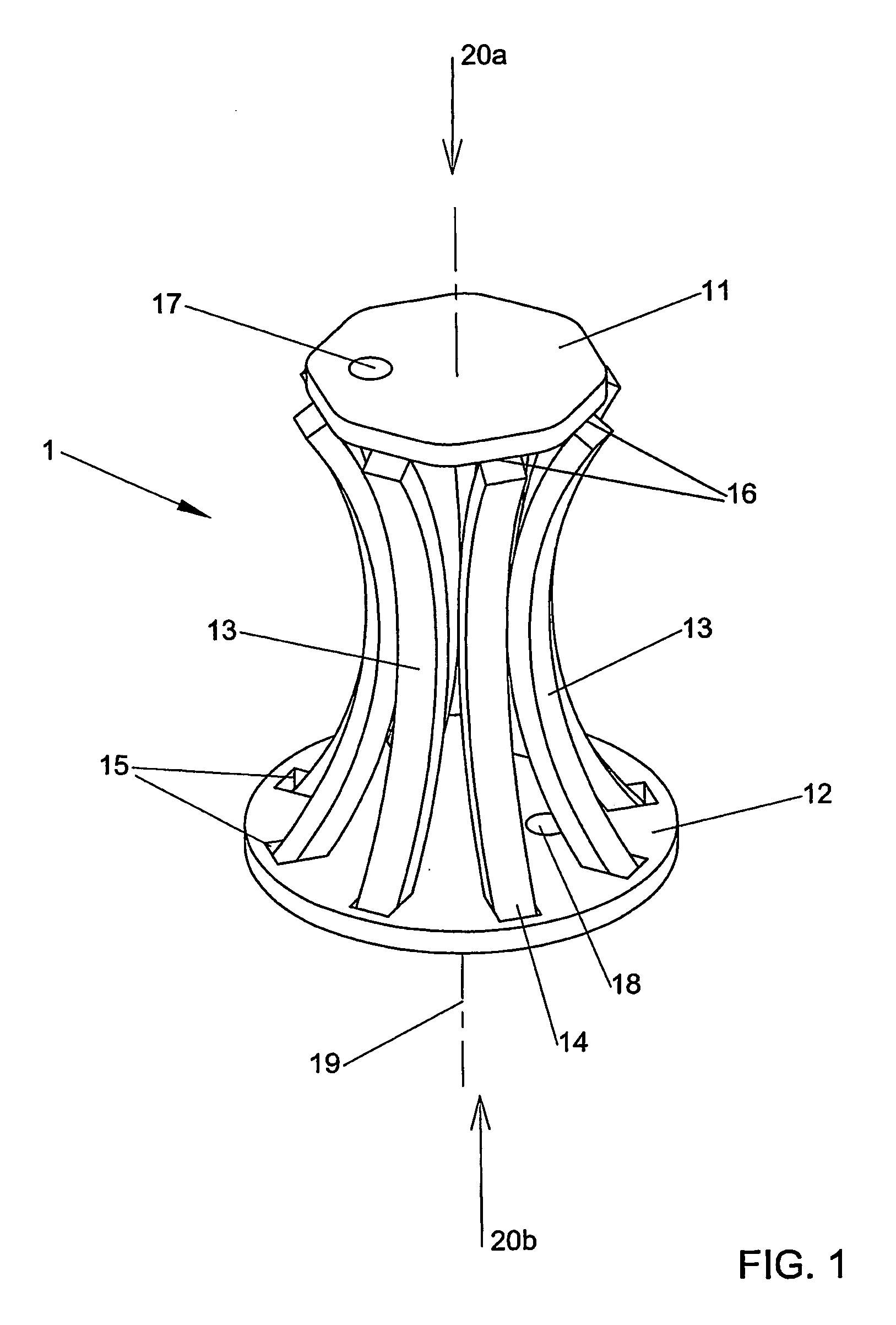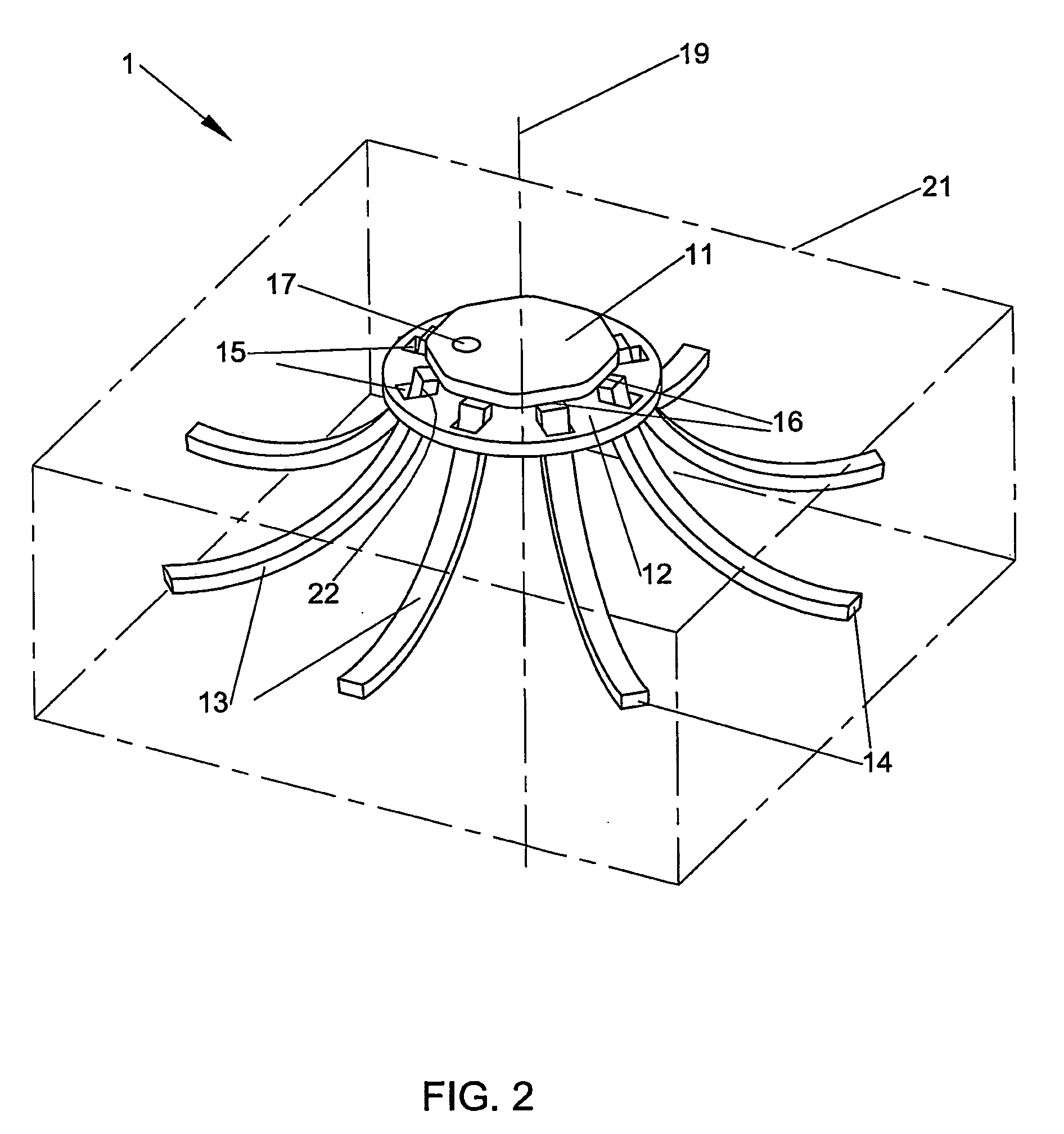Surgical Fasteners and Fastening Devices
a technology applied in the field of surgical fasteners and surgical fastening devices, can solve the problems of significant drawbacks of fasteners and fastening devices, time-consuming and inconvenient, etc., and achieve the effect of increasing the force necessary and being better attached to the delicate soft tissu
- Summary
- Abstract
- Description
- Claims
- Application Information
AI Technical Summary
Benefits of technology
Problems solved by technology
Method used
Image
Examples
Embodiment Construction
[0099]FIGS. 1 and 2 show a fastener 1 in accordance with one embodiment of the fastener of the invention. The fastener 1 is shown in FIG. 1 in its undeployed configuration from a side perspective view. The fastener 1 is shown in FIG. 2 in its deployed configuration in a tissue 21 from a side perspective view. The tissue 21 is indicated by broken lines in FIG. 2. The fastener 1 has a first element in the form of a flat crown 11. The fastener 1 also has a second element in the form of a flat baseplate 12. Two or more prongs 13 extend from the crown 11 at hinge regions 16. Each hinge region 16 is a weakened region at the attachment site of each prong 13 to the crown 11. The integral hinge 16 between the crown 11 and prongs 13 may be formed by attachment of the prongs to the crown with biocompatible glue or adhesive that is weaker than the material of the crown and prongs. In this embodiment, the crown 11 is integrally formed with the prongs 13. Eight prongs 13 are shown in FIG. 1, but ...
PUM
 Login to View More
Login to View More Abstract
Description
Claims
Application Information
 Login to View More
Login to View More - R&D
- Intellectual Property
- Life Sciences
- Materials
- Tech Scout
- Unparalleled Data Quality
- Higher Quality Content
- 60% Fewer Hallucinations
Browse by: Latest US Patents, China's latest patents, Technical Efficacy Thesaurus, Application Domain, Technology Topic, Popular Technical Reports.
© 2025 PatSnap. All rights reserved.Legal|Privacy policy|Modern Slavery Act Transparency Statement|Sitemap|About US| Contact US: help@patsnap.com



